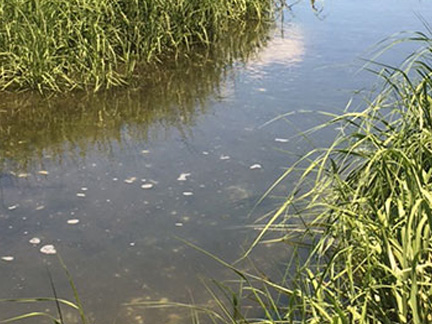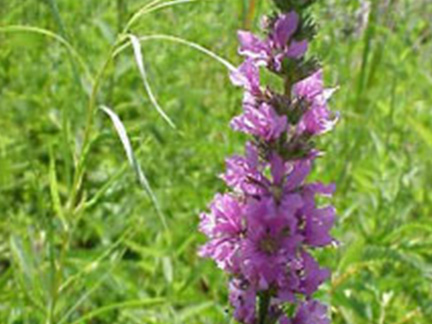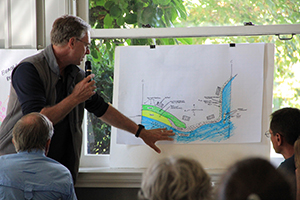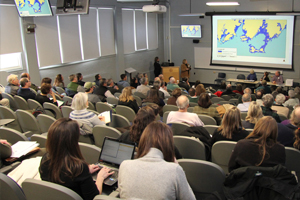 Coastal Resources
Coastal Resources
Long Island Sound is an estuary with almost the entire state of Connecticut within its watershed. Wise use and conservation of our coastal and inland resources is critical to the health of Long Island Sound. The Connecticut Sea Grant Extension Program supports management efforts to conserve and protect ecosystems, habitats and living resources within Connecticut and the northeastern United States. Support of management efforts includes conducting research, education and outreach in coastal land use and community planning, habitat restoration and enhancement and water quality. Fostering collaborative partnerships with federal, state, and local municipal agencies as well as conservation groups is key to coastal resource management in Connecticut.
Here you will find information on Connecticut's coastal natural resources and current issues and projects along our coast.
Coastal Habitats is a collaborative effort between the CT NEMO Program and Connecticut Sea Grant.
Coastal Habitats
This section provides descriptions of major coastal habitats that you will find in Connecticut and some of the threats that are impacting these habitats as well as ongoing projects that are restoring or managing these resources.
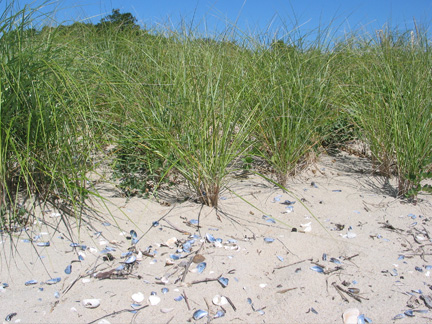
Beaches & Dunes

Grasslands & Shrublands

Forest & Woodlands

Tidal Marshes
Living Shorelines
In Connecticut, the term "living shoreline" is used to mean a shoreline erosion control management practice which also restores, enhances, maintains or creates natural coastal or riparian habitat, functions and processes. Coastal and riparian habitats include but are not limited to intertidal flats, tidal marsh, beach/dune systems, and bluffs. Living shorelines may include structural features that are combined with natural components to attenuate wave energy and currents.
More Coastal Resources
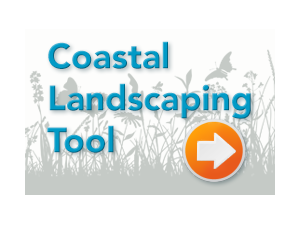
Coastal Landscaping Guide for Long Island Sound
Shoreline Homeowners
The Coastal Landscaping Tool is available to help you determine which landscaping option is right for you. Select how much salt spray you experience, if you have a sea wall or not, and the average slope of your property. Most of the plants listed in Step 2 have at least some tolerance to salt spray, but some are more tolerant than others. Some plants may also have tolerance to saline soils.
The Coastal Landscaping Guide for Long Island Sound is a collaboration of UConn's Connecticut Sea Grant, CLEAR and the College of Agriculture, Health and Natural Resources.
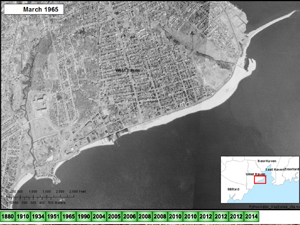
Shoreline Change Analysis
100 Years of Erosion and Accretion
The Connecticut Shoreline Change Project analyzes how the Connecticut shoreline has changed between the late 1800’s and 2006 through loss (erosion) and gain (accretion) over time. A Geographic Information System (GIS) time series analysis was conducted using maps of the Connecticut shoreline from several different time periods between 1870 and 2006 to provide a high-level, quantifiable assessment of Connecticut shoreline trends from both a statewide and a localized perspective.
This project was funded by NOAA/National Sea Grant. Analysis was conducted by Kevin O'Brien (CT DEEP) and Joel Stocker in collaboration with Juliana Barrett and Bruce Hyde, UConn Department of Extension & CLEAR.
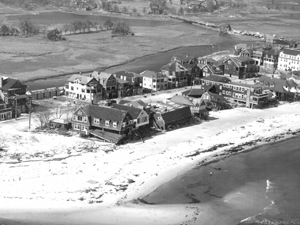
Connecticut’s Coast: Then & Now
Explore Connecticut's Changing Shoreline
Comparing carefully aligned, scanned 1934 aerial photos with current aerial images reveals where the Connecticut shoreline has changed over time by both natural forces and human activity.
Funding for this project provided by Connecticut Sea Grant and UConn Cooperative Extension. This website was created by Joel Stocker and Emily Wilson, UConn Department of Extension & CLEAR. Contact Emily at emily.wilson@uconn.edu.

Connecticut Coastal Planting Guide
This guide will be a useful tool for those interested in native landscaping within Connecticut’s coastal region. It contains a list of plants that will grow well along Long Island Sound and several miles inland. There are a wide variety of habitats and growing conditions, including tidal marshes and coastal forests, soils ranging from fine silts to sandy or rocky soils, and soil moisture conditions ranging from wet or moist to very dry. Vegetation in a particular area depends on a complex suite of site characteristics including geology and soils, local climate, topography, land use history and biotic factors. So the plants found growing in one location may be very different from those found one or two miles away.
Written by Juliana Barrett, CT Sea Grant & UConn CLEAR.
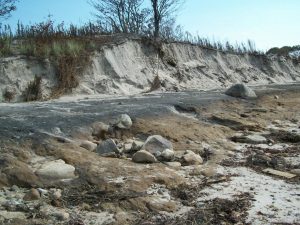
Connecticut Beaches and Dunes: A Hazard Guide for Coastal Property Owners
Storms and associated hazards such as flooding and erosion can damage coastal property and affect beaches and dunes that provide valuable habitat for uniquely adapted species of plants and animals. This website will help you evaluate threats and identify what you can do to protect your coastal property and the natural environment.
This project was funded by a Connecticut Sea Grant Development Fund Grant to Juliana Barrett, CT Sea Grant & UConn CLEAR.
For Citation Purposes: Connecticut Sea Grant & University of Connecticut’s Center for Land Use Education and Research. (June 8, 2016). Coastal. https://climate.uconn.edu/habitats-resources/coastal

